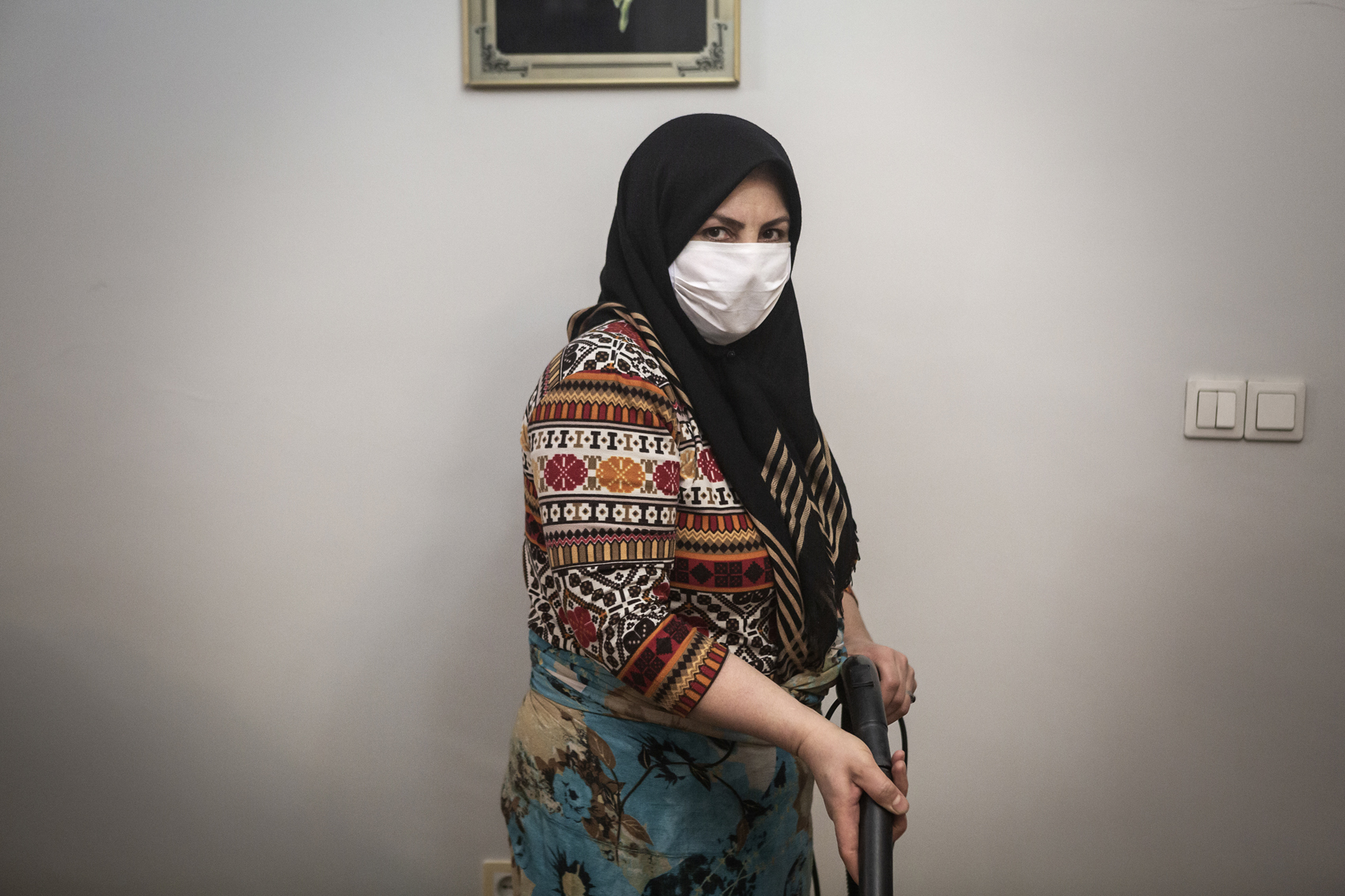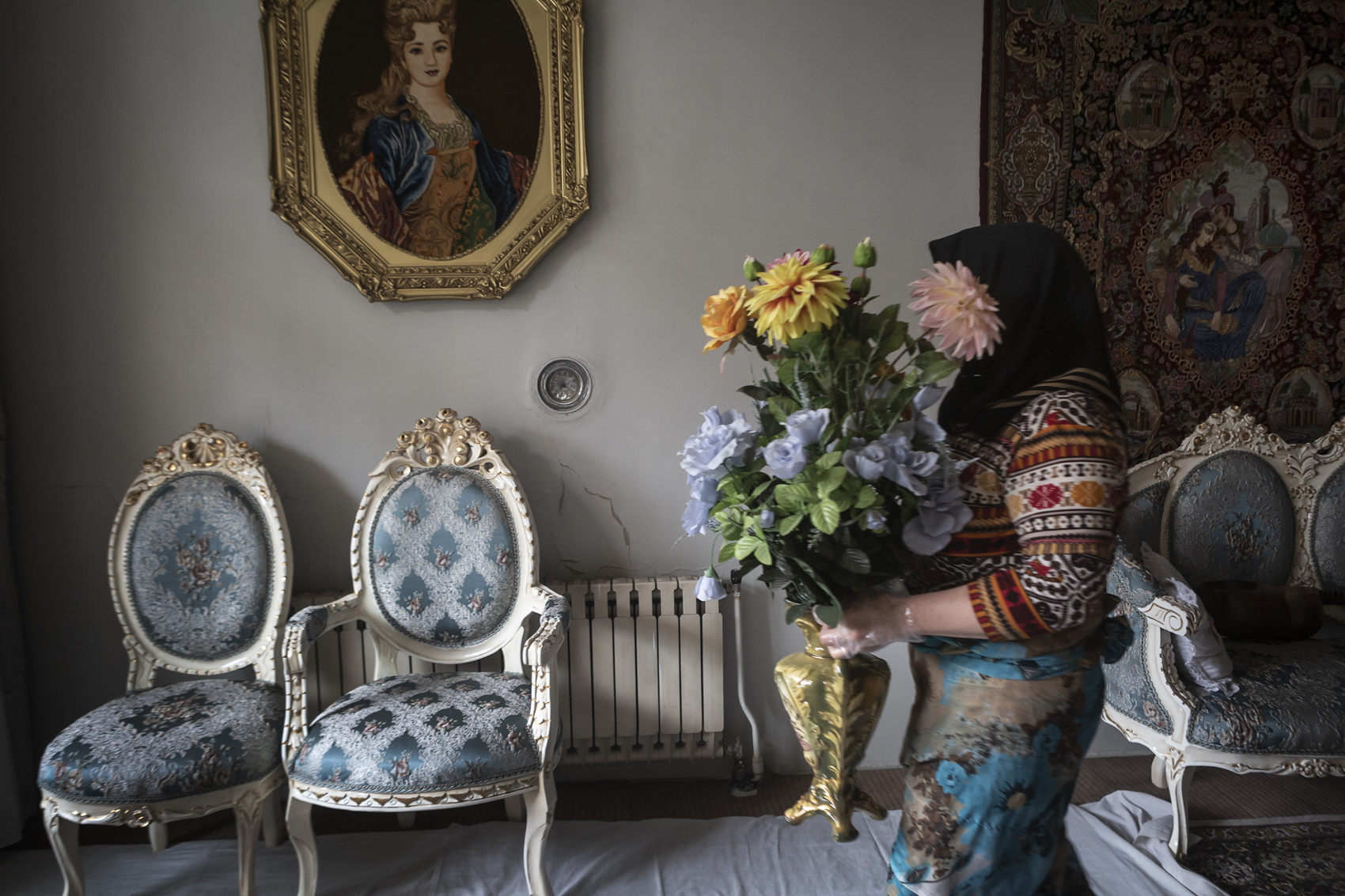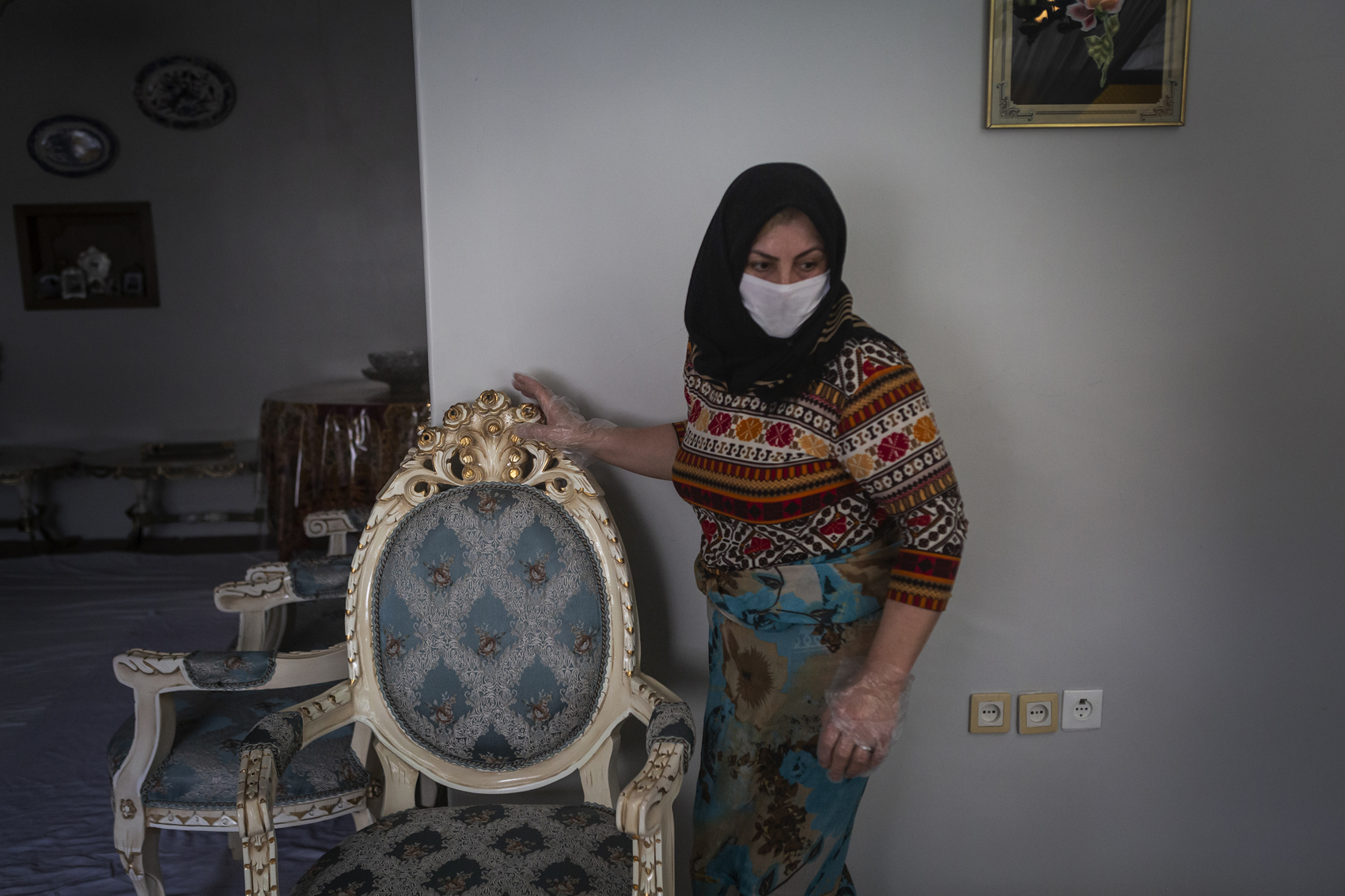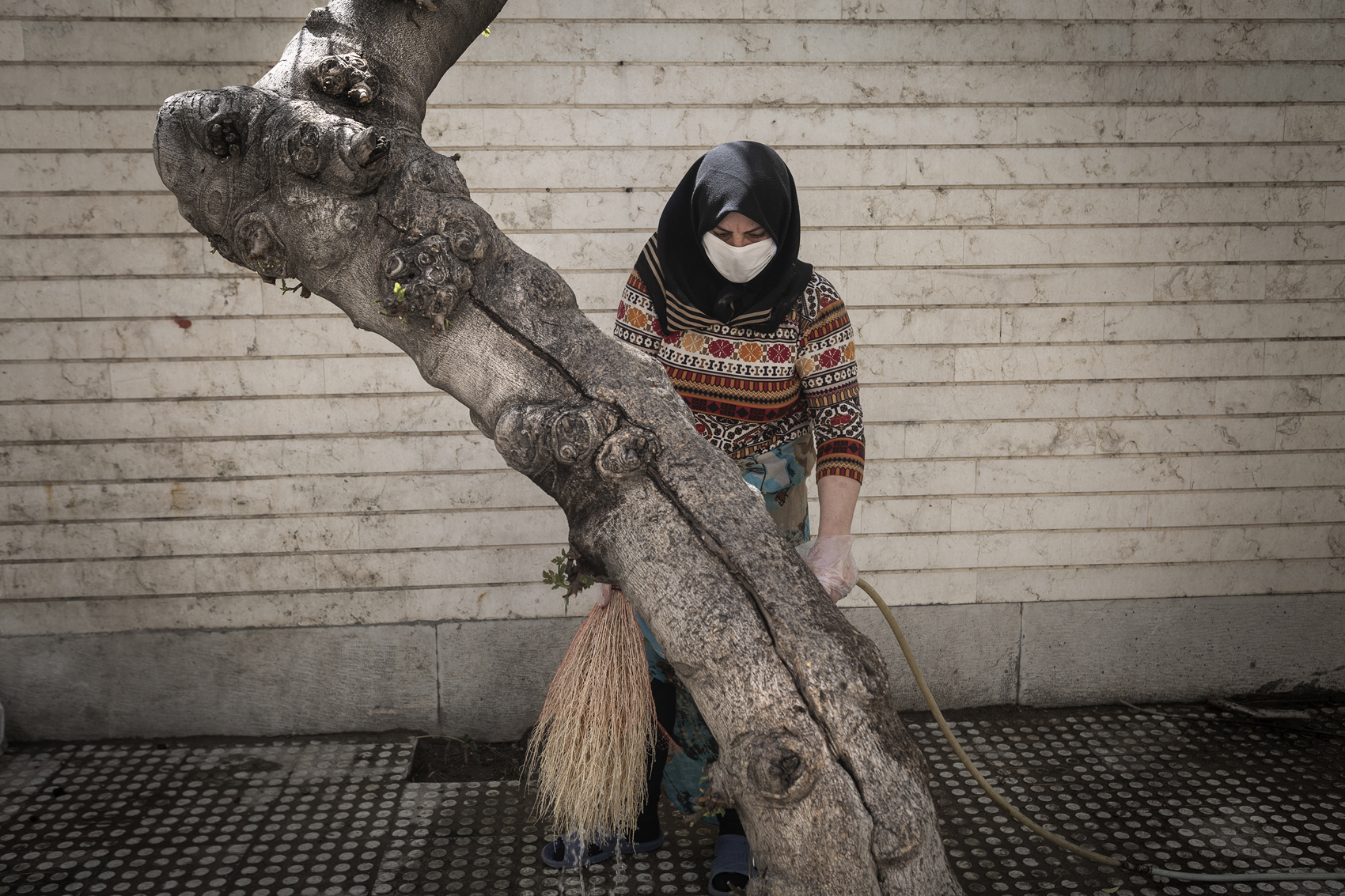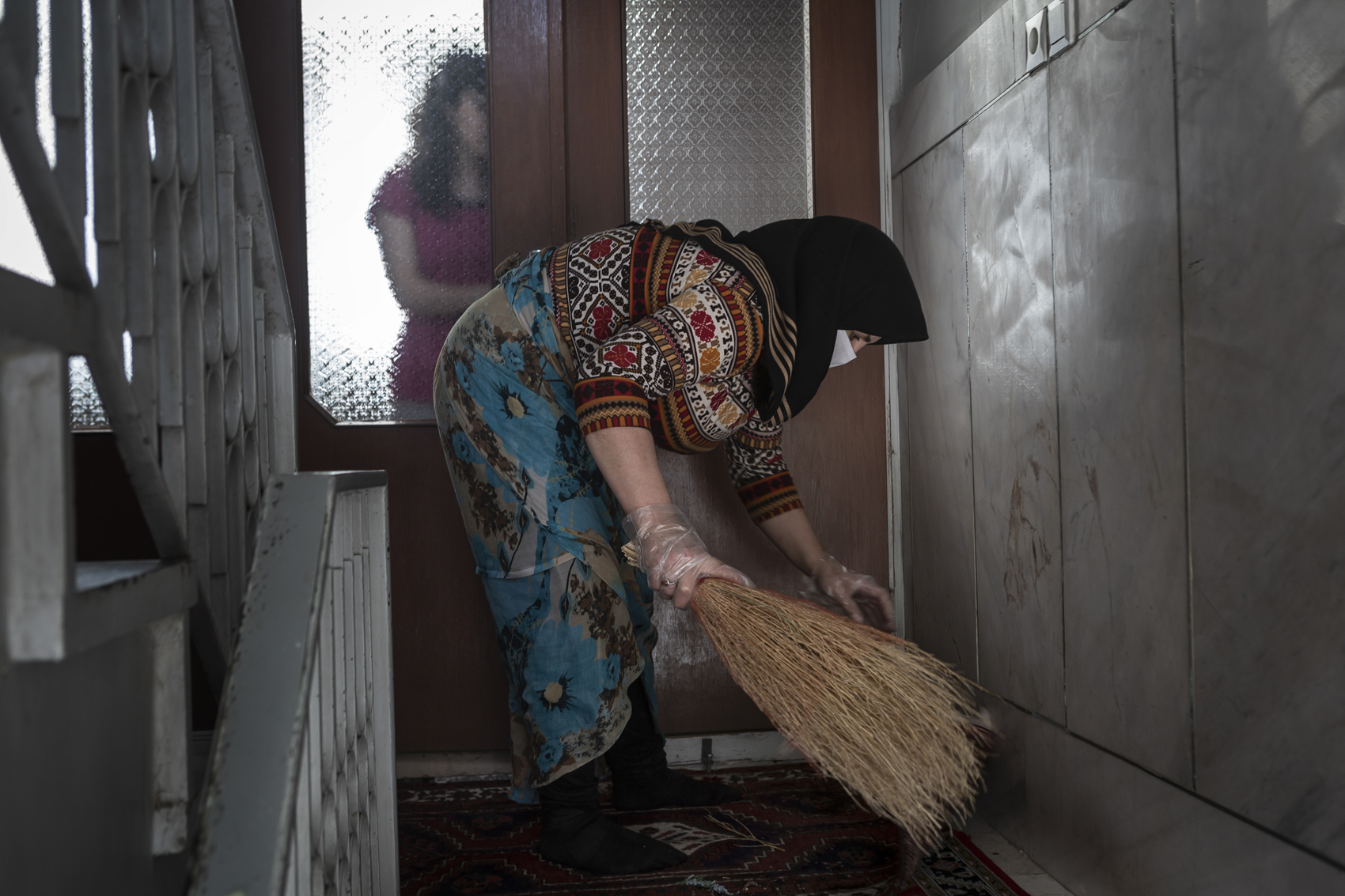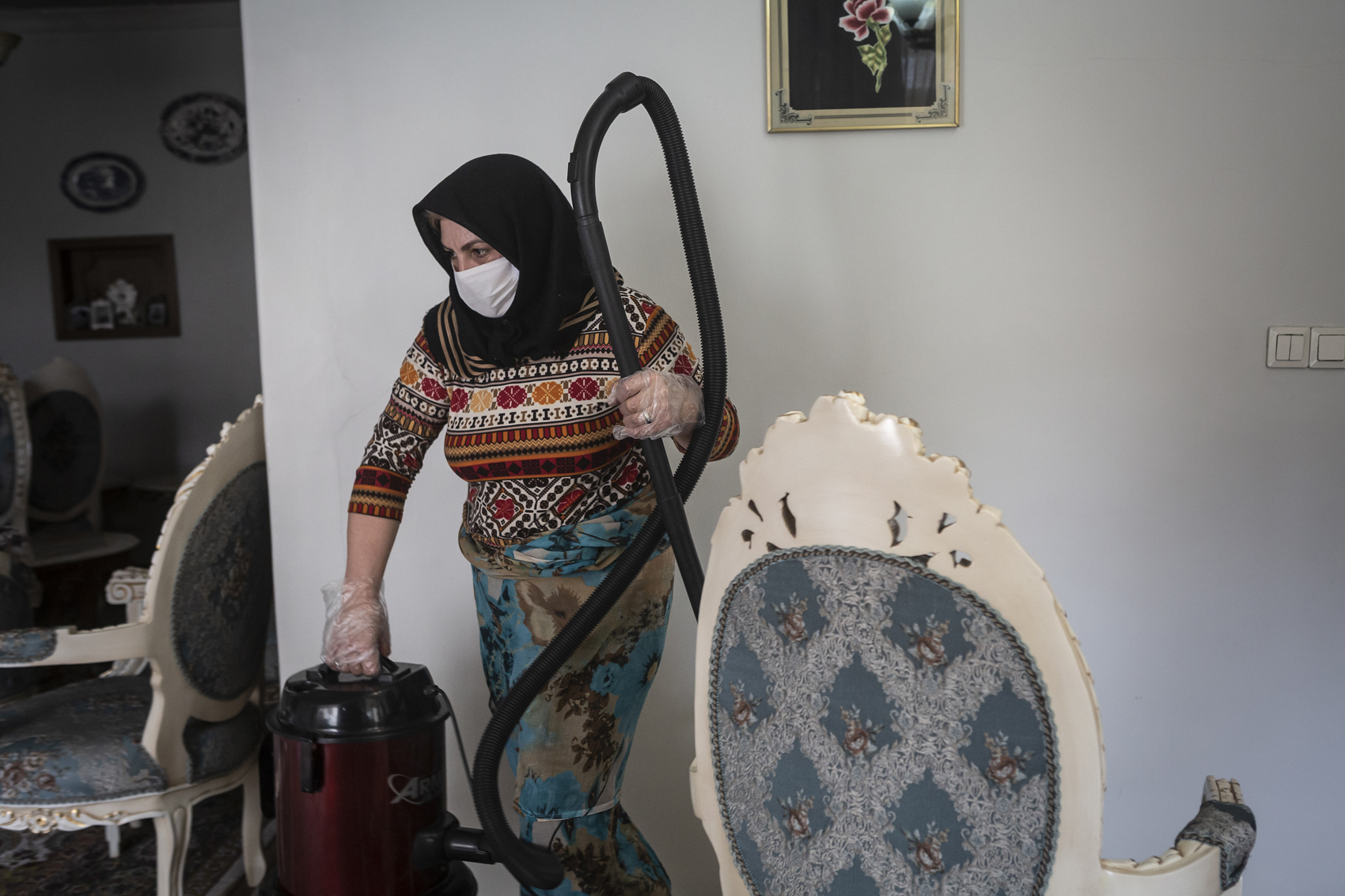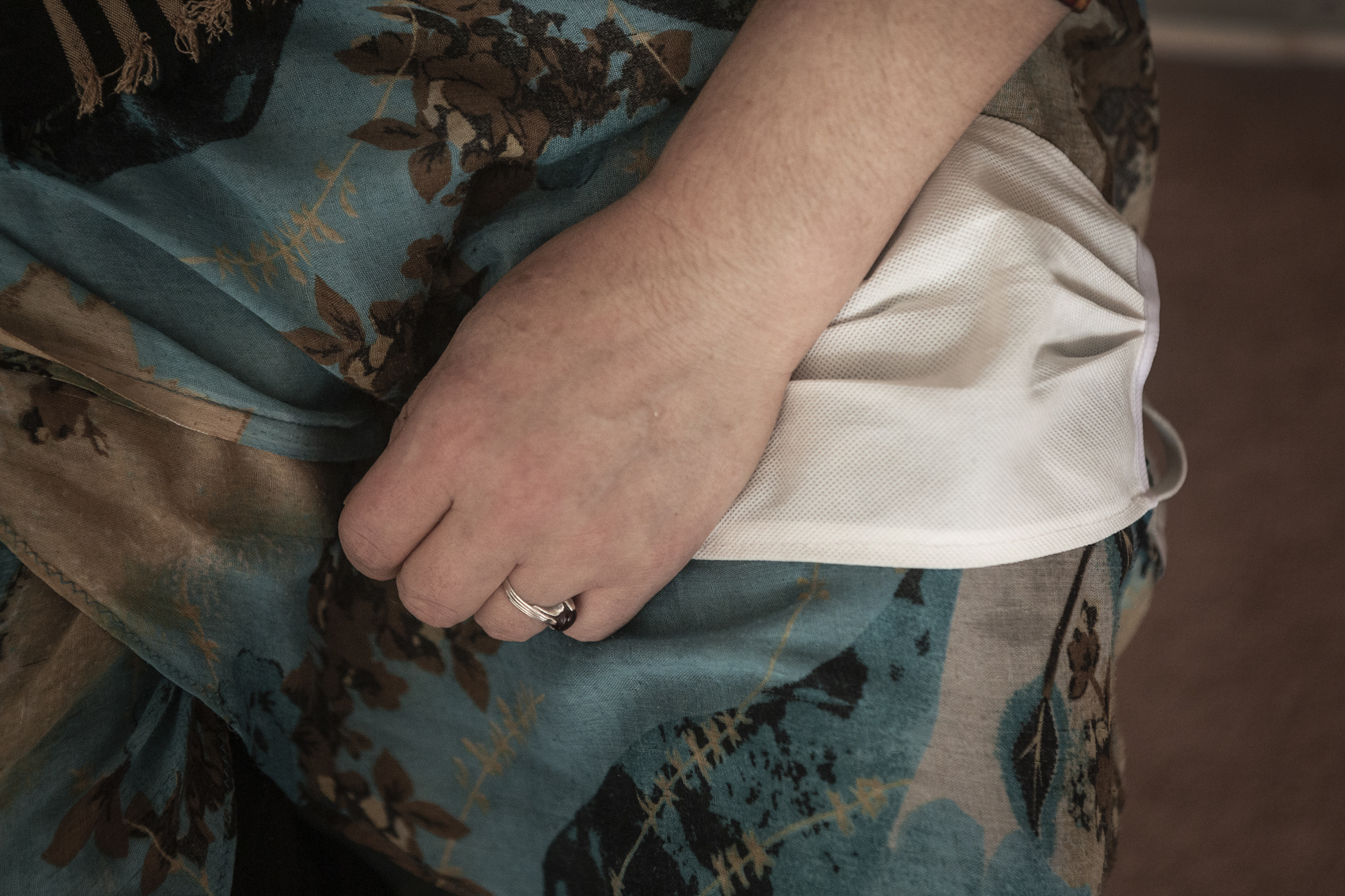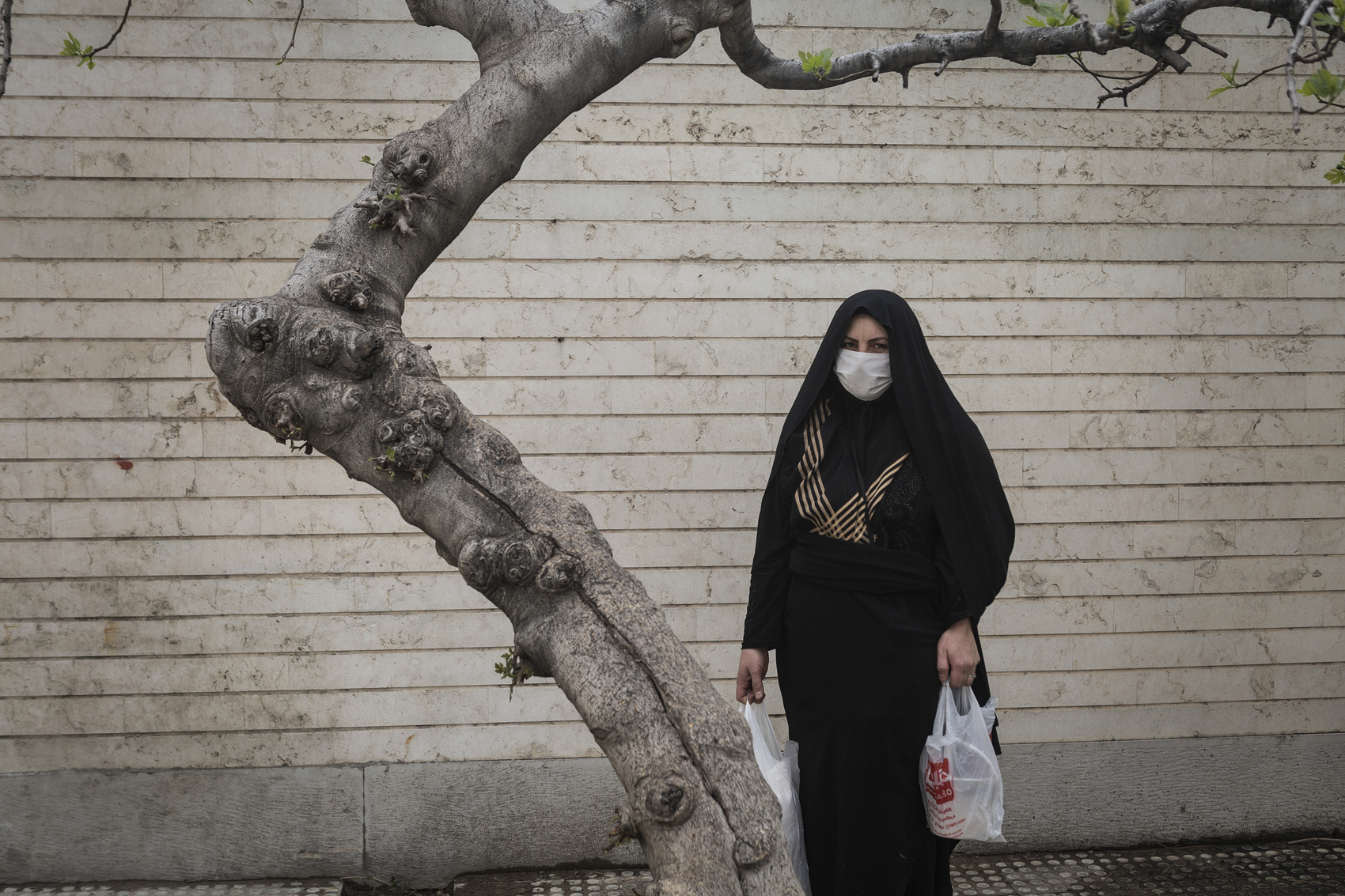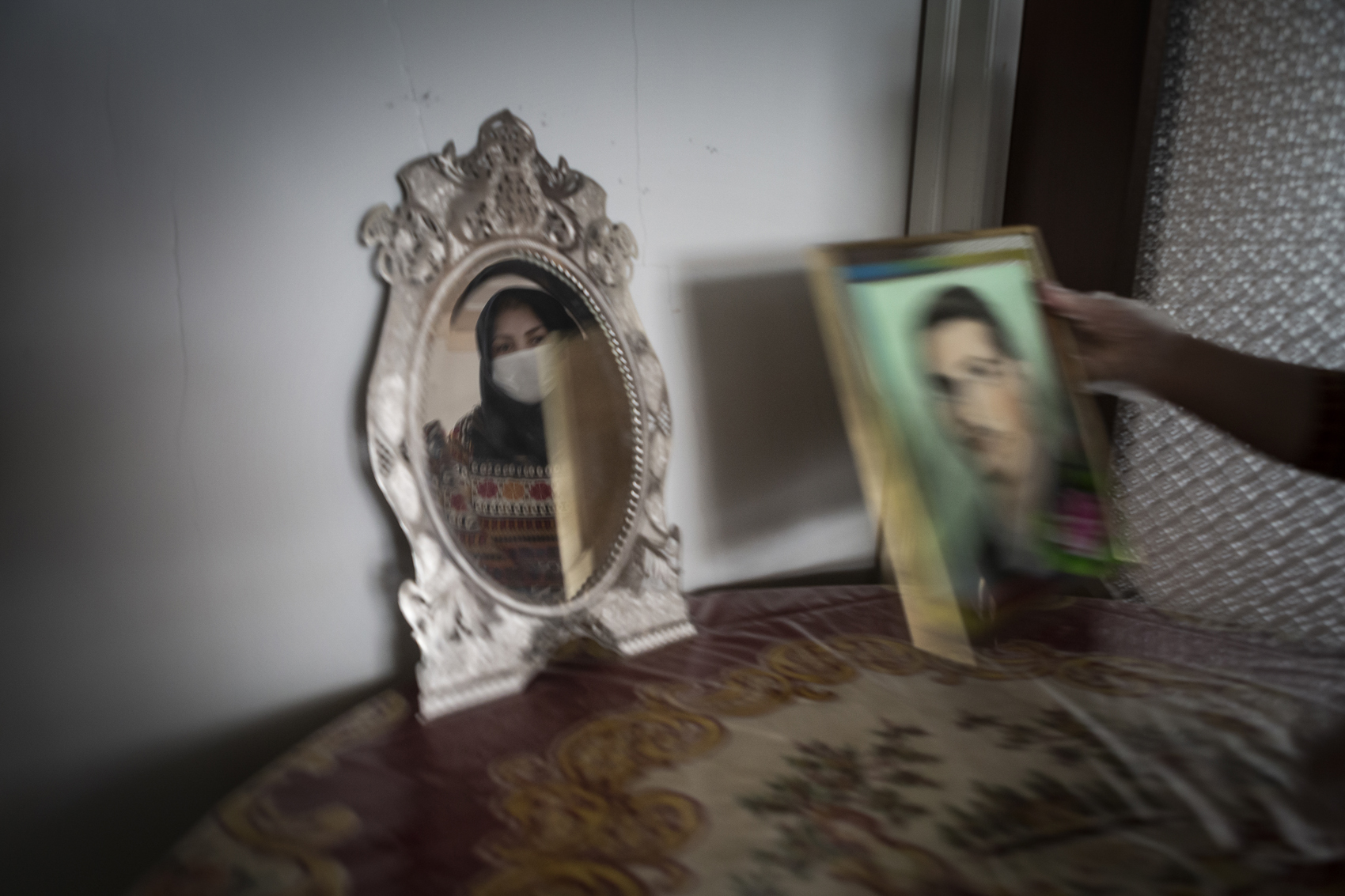Zahra, The Cleaning Lady – (Extended)
Project Location | Middle East, Iran, Tabriz
Production Date | 2020-05-19
- (2020 Grant recipients of Pulitzer Center)
Mrs. Zahra is 48 years old. She is a cleaning lady and is getting ready to sweep the house with a mask on her face. As the sole breadwinner of her home, she has four daughters and a sick and disabled husband. Not only do they not have insurance, the cost of her husband's treatment is a heavy burden on Zahra. "My daughters don't want me to work at other people's homes and be known as a cleaning lady. That's why I prefer to work in a limited number of trustworthy homes, and I feel safe there," she said.
The outbreak of COVID-19 in Iran and the announcement of quarantine by the government made working conditions more difficult for Zahra. However, despite the quarantine days, she was forced to keep working due to her family's economic situation. On the days she can work, she earns 100,000 tomans a day, equivalent to $5 in Iran. "I have no dreams in life. My dream is to make my daughters' dreams come true so that I can raise them with self-esteem and honour, and help them with what they deserve. If the quarantine days come back and I can't work, I don't know how I can pay for my husband's treatment, food, and the children's school expenses. I can only pray to God," said Zahra.



